Martin Scorsese's latest movie is over 3 hours long? What a disgrace! Now, excuse me while I spend 10 hours binging Netflix's Dark Crystal TV show.
According to, um, science, the average, properly hydrated human can go nine to ten hours without peeing, that is assuming your bladder doesn't take in any more than 600 milliliters of urine during that period. Under normal circumstances, that should be doable. However, any number of mitigating factors can cut into that expected hold time, like pregnancy, health issues, or, I dunno, sitting in an AMC movie theater and drinking a large Coke which is the equivalent of 1,537 milliliters of liquid. Granted, due to the way our body absorbs liquid that doesn't mean all 1,537 milliliters of pop will become pee, but that's more than enough to make you squirm in your seat if the movie stretches on too long.
Planning Your Bathroom Break
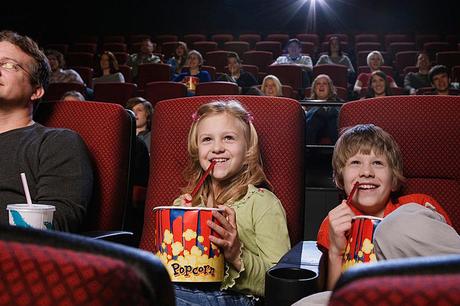
All moviegoers - or parents/guardians taking kids to movies - have been in that position at some point. In fact, there's at least one app whose sole purpose is to help people plan their bathroom breaks during long movies. Seeing the three-hour-long Avengers: Endgame? Better plan an early trip, like when Black Widow and Cap are talking about needing to move on. You'll miss important exposition if you leave a little later and the best jokes and action scenes if you leave much later. Heading out to the 160-minute-long Once Upon a Time in Hollywood? Maybe head for the bathroom when Tarantino self-indulgently plays out an entire scene from Rick Dalton's western TV show. Spoiler: Rick eventually forgets his lines.
As such, whenever news drops of some upcoming film daring to break past the 2-hour barrier and challenging audiences to endure up to and sometimes over three hours of sitting in a movie theater our common response is to worry about how many bathroom breaks we'll need. I've heard it more than a few times in the commentary surrounding The Irishman, Martin Scorsese's upcoming awards contender which reportedly clocks in at three and a half hours long, aka 210 minutes. "That is too many minutes, no matter how good the minutes are" reads the lede of a Jezebel piece about it.

Now, I am not here to pee-shame anyone - that's a thing, right? - nor do I mean to simplify this down to a mere issue of people worrying about how long they'll be able to sit without needing a bathroom break. There are certainly far more substantive arguments to be made against self-indulgent filmmaking and questions to be asked about whether the demands of quality storytelling can ever truly support a movie that runs longer than the average, notoriously-long MLB game. (Scorsese's last film, Silence, for example, is way too long at 161 minutes, and its padded length detracts from its power as a cinematic experience.)
Does This Conversation Even Matter For Streaming Movies?
However, as I joked at the start I do wonder if this is an argument that has already passed or is at least nearing its cultural expiration date? Only a handful of people genuinely have to worry about movie theater bathroom breaks with The Irishman. Netflix wants to run the movie in theaters for a couple of awards-qualifying, profile-raising weeks before dropping it on streaming for everyone around the world to enjoy. The big theater chains - AMC, Regal, Cinemark - which are responsible for over 80% of all movie screens in North America said no f'n way; the indies were cool with it. Ergo, only a minuscule slice of Irishman 's eventual audience will ever see it in a theater.
So, if people streaming at home balk at The Irishman' s 210-minute length, they can easily pause the movie for any necessary bathroom break or - and the following would be considered sacrilege in prior eras and probably still seems that way to purists - they can just watch the thing in multiple sittings.
That likely runs completely counter to how Scorsese intended audiences to consume his sprawling epic about the man who brought down Jimmy Hoffa, but it's a possibility you open yourself up to when you free the audiences from the need to see something in a theater. When you have them as a captive audience in a theater, you can at least somewhat control the variables. Outside of that, however, people are going to watch however they feel like watching.
This transition hasn't always been to the filmmaker's liking.
Directors still rage against people who dare to watch movies on their phones. Cinematographers despair over all of their hard work being upended by TV's doing something called "motion smoothing"? In fact, there will soon be special TVs with a "filmmaking mode" endorsed by the likes of Christopher Nolan, Ryan Coogler, Riah Johnson, and, yes, Scorsese.
How To Define "Movie"
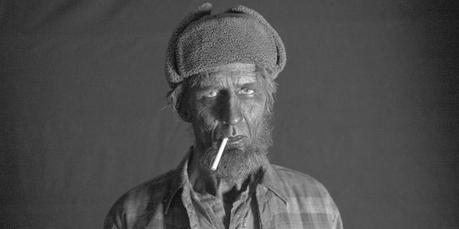
Yet, as the middle falls out of the film industry and the mass migration of directors over to TV continues ever unabated people like Spielberg and incoming Academy president David Rubin are openly wondering how we even define what qualifies as a movie anymore. If the mode of distribution is no longer the ultimate arbiter of film vs. TV, then how do we argue with David Lynch when he repeatedly argues that Twin Peaks: The Return was an 18-hour movie and not a TV show?
As Vox's Emily VanDerWerff argued at the time, "The fights over Twin Peaks are, ultimately, all in good fun, but they point to the very real fact that we're rapidly heading toward an age when ironclad distinctions will start to become helpful suggestions and then will disappear altogether."
Heck, today it's pretty much a marketing cliche for any director to describe their multi-episode streaming series as a "insert number-hour movie."
Forget TV. Forget Movie. Just Call it "Streaming."
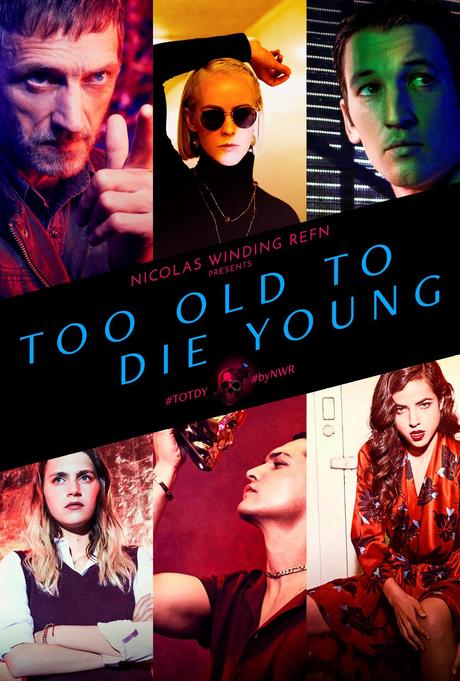
Nicolas Winding Refnrecently attempted to blow up any distinctions between film and TV and simply think of his 10-episode, 13-hour-long Amazon program Way Too Old to Die Young as "streaming." He condensed two of the episodes into a 138-minute film which played at Cannes. Then he sent critics the fourth and fifth episodes of the show without telling them those weren't actually the first two episodes of the series. "It's how my kids watch entertainment," Refn told IndieWire about his rationale. "They'll find something and they'll drop in. If it interests them, they'll stay. Plus it was a great way just to get into the heart of the show. I'm an entertainer, at the end of the day - I'm here to give you a spectacle."
The gambit didn't work. Reviewers were flummoxed. Amazon offered next to no promotion. Now, most people don't even know Too Old to Die Young - a show with recognizable name talents like Miles Teller and John Hawkes - even exists.
If It's Good Enough for Tarantino...

Almost equally as unnoticed this year was Tarantino's surprise recut of The Hateful Eight for Netflix. Originally released in 2015 as a butt-numbing, three-hour movie about bad people doing bad things in a small, snow-blocked cabin, Tarantino opted to add in new footage and slightly re-work what was already there to convert Hateful into a four-episode series. To many reviewers, this was always Hateful' s more natural format, especially the way Tarantino structured the film into chapters, each with their own cliffhanger.
When you look on Netflix, however, this version of Hateful is classified as a TV series, simply called Hateful Eight: Extended Cut. If you'd rather see the original version, it's also on there, as a movie. Are the two really that different, though? In the former, Tarantino has picked where you can stop watching if you should choose to consume it in chunks; in the latter, you can do that yourself if you'd like. It's not hard. The chapter breaks are all signaled by title cards and represent new twists in the story.
Scorsese Just Wants to Make an Oscar Movie
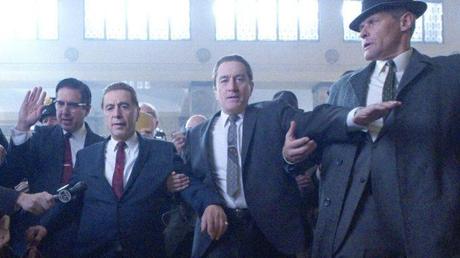
Unlike Winding Refn's radical approach or Tarantino's openness to serialized experimentation, Martin Scorsese is nowhere near as "let's blow it all up" with The Irishman. This is a capital "O," capital "M" Oscar Movie. It is Ted Sarandos' latest best chance at adding a Best Picture Oscar to his awards statue. (Though should Irishman fizzle with critics, the streamer might have an even better candidate this year with Noah Baumbach's rave-reviewed Marriage Story.)
However, in delivering a movie in The Irishman which is longer than either season of Fleabag and will mostly be seen on Netflix isn't Scorsese inviting audiences to treat it like the latest streaming show they can indulge at their leisure?
To the purist, that is sacrilege. To the cynic, it's what you get for losing all discipline and self-indulgently delivering a long-ass movie. And maybe to someone in-between, there is an understandable pragmatism to breaking up the viewing experience. After all, back in the day movie theaters had intermission breaks. However, the rhythm and energy of a movie still fundamentally differs from that of a streaming show which means we can't consume one exactly like we do the other. Binging a show is not the same as watching movie.
However, there is perhaps a bigger challenge facing The Irishman. Should people feel compelled to hit pause and resolve to maybe, though not definitely come back to finish it a day later, will that mean they were too busy to devote 210 minutes to the movie or were they just too bored to bother finishing the whole thing?
What's your take on The Irishman or the ongoing movie vs. TV vs. streaming debate? Be honest, how often do you watch movies in multiple sittings either due to time or preference or otherwise? Are you surprised I went all this time talking about long movies and bathroom breaks and never mentioned The Return of the King? Well, I just did. So, there's that.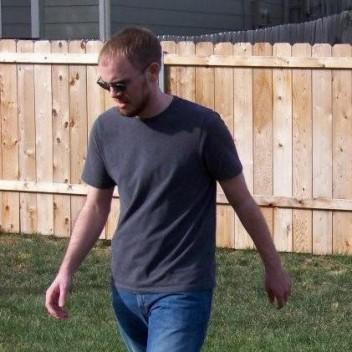
Grew up obsessing over movies and TV shows. Worked in a video store. Minored in film at college because my college didn't offer a film major. Worked in academia for a while. Have been freelance writing and running this blog since 2013. View all posts by Kelly Konda

